On Dec 6, a Minute of Global Darkness
For just a moment on December 6, nearly 9 in 10 people worldwide experience nighttime.
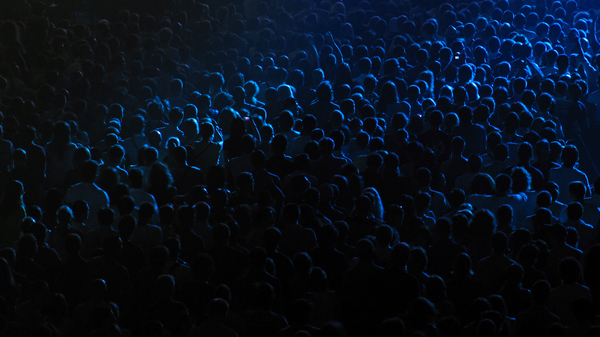
For a bit of fun, we calculated the moments in 2022 when most of the worldās population is in darkness.
Ā©¾±³§³Ł“Ē³¦°ģ±č³ó“Ē³Ł“Ē.³¦“Ē³¾/°ģ²¹³Ł²¹³Ł“Ē²Ō¾±²¹82
Out of the Light, Into the Dark
A few months ago, our number crunchers fact-checked (and partially confirmed) an internet claim that 99% of the worldās population gets sunlight at 11:15 UTC on July 8.
This left us wondering: what about the opposite situation? At what precise instant do most people experience nighttime?
Take It with a Grain of Salt
While weāre confident in our calculations and data sets, determining how many people experience nighttime at any one moment is a rather messy business.
For one, the worldās population isnāt static. It changes over time, and in some locations, it does so at a different pace than in others. We based our calculations on the latest reliable population data we could findābut they are from 2020.
Whatās more, the margins are minuscule. While our algorithms identified a specific instant when most people experience night, they also gave us plenty of other dates and Ā鶹ӳ» during the Northern Hemisphere winter with a nighttime population that is just a tiny fraction smaller. Weāre talking a few tens of thousands of peopleāpeanuts compared to the worldās population.
Like last time, we fed our computers with timeanddateās Sun data for 2022 and population data from the at Columbia University. We then calculated population data for the day, the night, and the three twilight phases for every minute of every day of the year.
Hereās what we found out.
December 6: Most People in Nighttime
According to our calculations, the moment of maximum darkness happens on Tuesday, December 6, 2022, at 19:56 UTC.
Convert to your local time
At that instant, the sky will be completely dark for about 85.92 percent of the worldās population as the night reigns across the three most populous continents: Asia, Africa, and Europe (with very minor exceptions).
See it on the Day and Night World Map
Nighttime for Almost EveryoneāHow Is That Even Possible?
Just like at any other moment, the Sun will illuminate one half of the globe on December 6 at 19:56 UTC. The other half will be dark, and people living there will experience nighttime.
The reason why so many people will be in darkness is that the worldās most populated areas will be on the night side of Earth at that moment. That includes nearly all of Asia, which is home to about 60 percent of all humans.
Meanwhile, the Americas, New Zealand, and most of Australia will be bathed in sunlight. However, while being huge landmasses, relatively few people live there. North and South America combined only make up about 13 percent of our worldwide population.
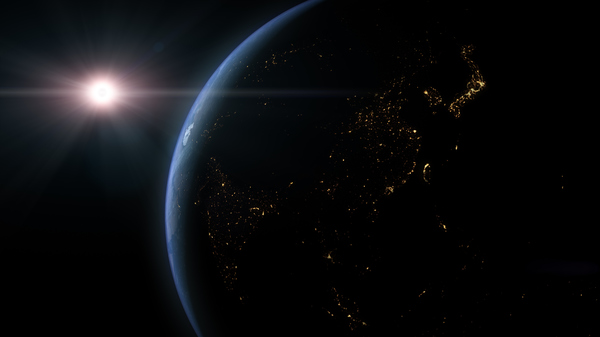
The Sun always illuminates one half of the planet while the other half is plunged into darkness (illustration image).
Ā©¾±³§³Ł“Ē³¦°ģ±č³ó“Ē³Ł“Ē.³¦“Ē³¾/³¢³Õ4260
Two Twilit Runners-Up
While itās nighttime for most people on December 6, there is also a case to be made for both December 21 and December 27 as alternative moments of maximum darkness.
You see, our computers spit out December 6 as the result only when we ask them to adhere to the strictest definition of nighttime, according to which the Sun must be at least 18 degrees below the horizon.
If the angle is less than 18 degrees, itās twilightāthe time in the morning and in the evening when indirect sunlight brightens the sky to some degree.
December 27: āFeels Likeā Night for Most People
The thing is, the darkest of the three twilight phases, astronomical twilight, is hardly discernible from the night with the naked eye. The Sun is between 12 and 18 degrees below the horizon during that twilight phase, and the sky is so dark that it feels like nighttime.
When we allowed our algorithms to include astronomical twilight, they calculated Tuesday, December 27, 2022, at 19:39 UTC as the moment of peak darkness.
Convert to your local time
According to our numbers, 86.11 percent of the worldās population experiences either nighttime (85.23%) or astronomical twilight (0.88%) at that instant.
See it on the Day and Night World Map
Thatās roughly 15 million more people compared to the number we calculated for December 6. Still, it hardly moves the needle on a global scale: the difference accounts for a mere 0.19 percent of the worldās population.
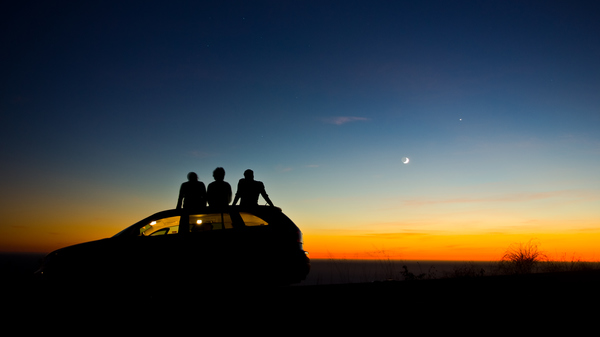
Twilight is when the Sun is below the horizon, but some indirect sunlight brightens the sky.
Ā©¾±³§³Ł“Ē³¦°ģ±č³ó“Ē³Ł“Ē.³¦“Ē³¾/²¹²Ō³Ł“Ē±ō¾±°ģĀį²¹²Ō
December 21: Most People without Direct Sunlight
The second alternative instant of peak darkness takes into account all twilight phases, also including nautical and civil twilight. During those two phases, the sky is noticeably brighter. However, thereās still no direct sunlight.
Applying this rather loose definition of ādarkness,ā we arrived at Wednesday, December 21, 2022, at 21:44 UTC as the moment when most of us are not in the daytime.
Convert to your local time
We calculated that this affects 88.14% of the worldās populationānearly 9 out of 10 people on Earth!
See it on the Day and Night World Map
Whatās So Special about Those Dates?
We werenāt particularly surprised that all the dates fall in the northern winter: most people reside north of the equator, and December is the month when the least amount of sunlight reaches the Northern Hemisphere.
But why does the number of people in darkness (or quasi-darkness) peak on those dates? Why does nighttime affect more people on December 6 than on, say, December 5?
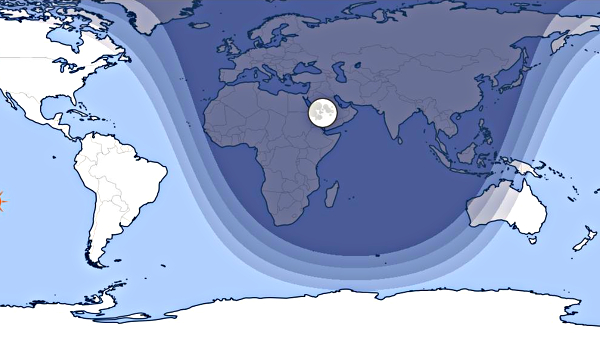
Day and night at 19:56 UTC on December 6. The darkest shade represents nighttime.
Ā©³Ł¾±³¾±š²¹²Ō»å»å²¹³Ł±š.³¦“Ē³¾
It all depends on how well the shape of the region affected by nighttime and twilight overlaps with the worldās most populated regions. That shape changes very slightly from one day to another as the Sun moves southward before the December solstice and northward again after the solstice.
On the dates we found, it simply matches the contours of the worldās population centers slightly better than on the day before or after.
But again, the difference is very, very small. Case in point: according to our calculations, the number of people experiencing night at 19:56 UTC on December 6 is 6,665,450,571; precisely 24 hours earlier, itās 6,665,326,866. Thatās a difference of 123,705 peopleāa tiny margin on a global scale.
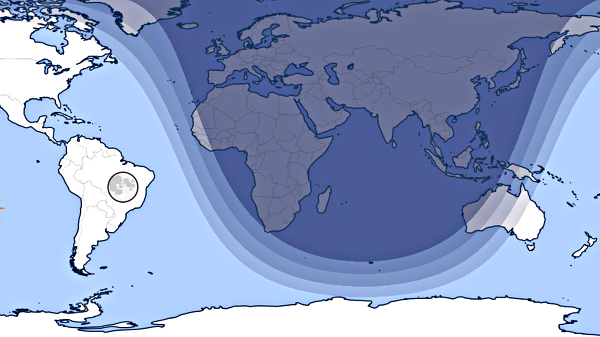
Day and night at 19:39 UTC on December 27. The second darkest shade is astronomical twilight.
Ā©³Ł¾±³¾±š²¹²Ō»å»å²¹³Ł±š.³¦“Ē³¾
Finding the Precise Minute
As for the time of day when most people experience darkness: itās basically when Asia, Africa, and Europe are on the night side of Earth.
During that time of the year, that happens every day at 19-something UTC, when night has just fallen in Europe and the first Sun rays of the new day have not yet reached the far east of Asia.
That said, you probably noticed that the time we calculated for December 21ā21:44 UTCāfalls out of line. Thatās because the inclusion of nautical and civil twilight makes for a larger geographical areaāan area that now stretches all the way from Japan in the east to some of North Americaās most populous metropolitan areas, such as New York and Montreal, in the west.
As you can see in the screenshots of our Day and Night Map, it is only when including the two brightest twilight phases that any significant portion of North Americaās population joins the ādark side.ā
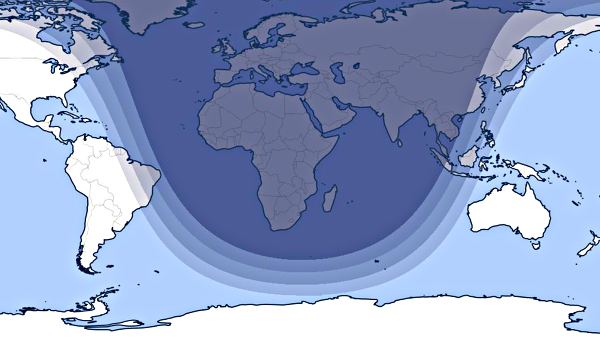
Day and night at 21:44 UTC on December 21. The three stripes between day and night symbolize the phases of twilight.
Ā©³Ł¾±³¾±š²¹²Ō»å»å²¹³Ł±š.³¦“Ē³¾
Wherever You Are, Enjoy the Dark Skies!
If you feel all this sounds too gloomy and canāt wait for days to get longer again, let us sweeten the deal a bit by pointing out how much dark skies have to offer during that time of the year.
- If the weather plays along, wrap up warm and go outside to enjoy the spectacular Geminids meteor shower. At its peak on December 14-15, we expect about 150 shooting stars per hour.
- A few days later, on December 22-23, the Ursids meteor shower peaks, bringing us about ten meteors per hour.
- And while waiting for the shooting stars to flit across the sky, you can use our Night Sky Map to spot planets and stars.
Find out more about what the dark skies have in store for us in our Cosmic Calendar!